Complete Solutions to Chapter Test of chapter WORK, ENERGY, POWER AND COLLISION of Class 11 book with complete answers and questions
| Class 11 | PHYSICS |
| Chapter | WORK, ENERGY, POWER AND COLLISION |
| A2Z | Chapter Test |
| Number Of Questions | 29 |
| Academic Year | 2023-24 |
A car of mass 1000kg accelerates uniformly from rest to a velocity of `54km//h` in 5 seconds. Calculate (i) its acceleration (ii) its gain in KE (iii) average power of the engine during this period.
View SolutionA stone of mass `1 kg` tied to a light inextensible string of length `L = (10)/(3) m` is whirling in a circular path of radius `L` is a vertical plane . If the ratio in the string is `4` and if `g` is taken to be `10 m//sec^(2)`, the speed of the stone at the highest point of the circle is
View SolutionA running man has half the KE that a body of half his mass has. The man speeds up by `1.0ms^(-1)` and then has the same energy as the boy. What were the original speeds of the man and the boy?
View SolutionA box of mass `25 kg` starts from rest and slide down as inclined plane `8` metre long and `5` meter length . It is found to move at the bottom at `7 m//s`. What is the force of friction?
View SolutionA aprtical moves on a rough horizontal ground with same initial velocity say `v_(0)`. If `(3//4)th` of its kinetic energy is lost in friction in time `t_(0)` , then coefficient of friction between the partical and the ground is:
View SolutionThe potential energy of a certain spring when stretched through a distance 'S' is `10` joule. The amount of work (in joule) that must be done on this spring to stretch it through an additional distance 'S' will be
View SolutionA bullet when fixed at a target with a velocity of `100 ms^(-1)`, penetrates one metre into it. If the bullet is fired with the same velocity as a similar target with a thickness `0.5` metre, then it will emerge from it with a velocity of
View SolutionA bullet having a speed of `100 m//see` crashes through a plank of wood. After passing through a plank , its speed is `80 m//s`. Another bullet of the same mass and size , but traveling at `80 m//s` is fired at the plank . The speed of the second bullet after traveling through the plank is (Assume that resistance of the plank is independent of the speed of the bullet) :
View SolutionA mass of `50 kg` is raised through a certain height by a machine whose efficiency is `90%` , the energy spend is `5000 J`. If the mass is now released, its `KE` on hitting the ground shall be:
View SolutionA block is moved from rest through a distance at `4 m` along a string line path . The mass of the block is `5 kg` and the force acting on it is `20N`. If the kinetic energy acquired by the block be `40 J`, at what angle to the path is the force acting?
View SolutionAn object of mass `m` is allowed to fall from rest along a rough inclined plane. The speed of the object on reaching the bottom of the plane is proportional to:
View SolutionGiven that the position of the body in `m` is a function of time as follows : `x = 2t^(4) + 5t + 4`
The mass of the body is `2 kg` . What is the increase in its kinetic energy onesecond after the stert of motion?
View SolutionIf `v` be the instantaneous velocity of the body dropped from the top of a power, when it is located at height `h`, then which of the following remains constant?
View SolutionTwo springs have their force constant as `k_(1)` and `k_(2) (k_(1) gt k_(2))`. When they are streched by the same force.
View SolutionThe power of a water pump is 2 kW. If `g = 10 m//s^2,` the amount of water it can raise in 1 min to a height of 10 m is :
View SolutionWater is flowing in a river at `2 ms^(-1)`. The river is `50 m` wide and has an average depth of `5 m`. The power available from the current in the river is (Density of water `= 1000 kg m^(3)`
View SolutionThe potential energy of a partical veries with distance `x` as shown in the graph.
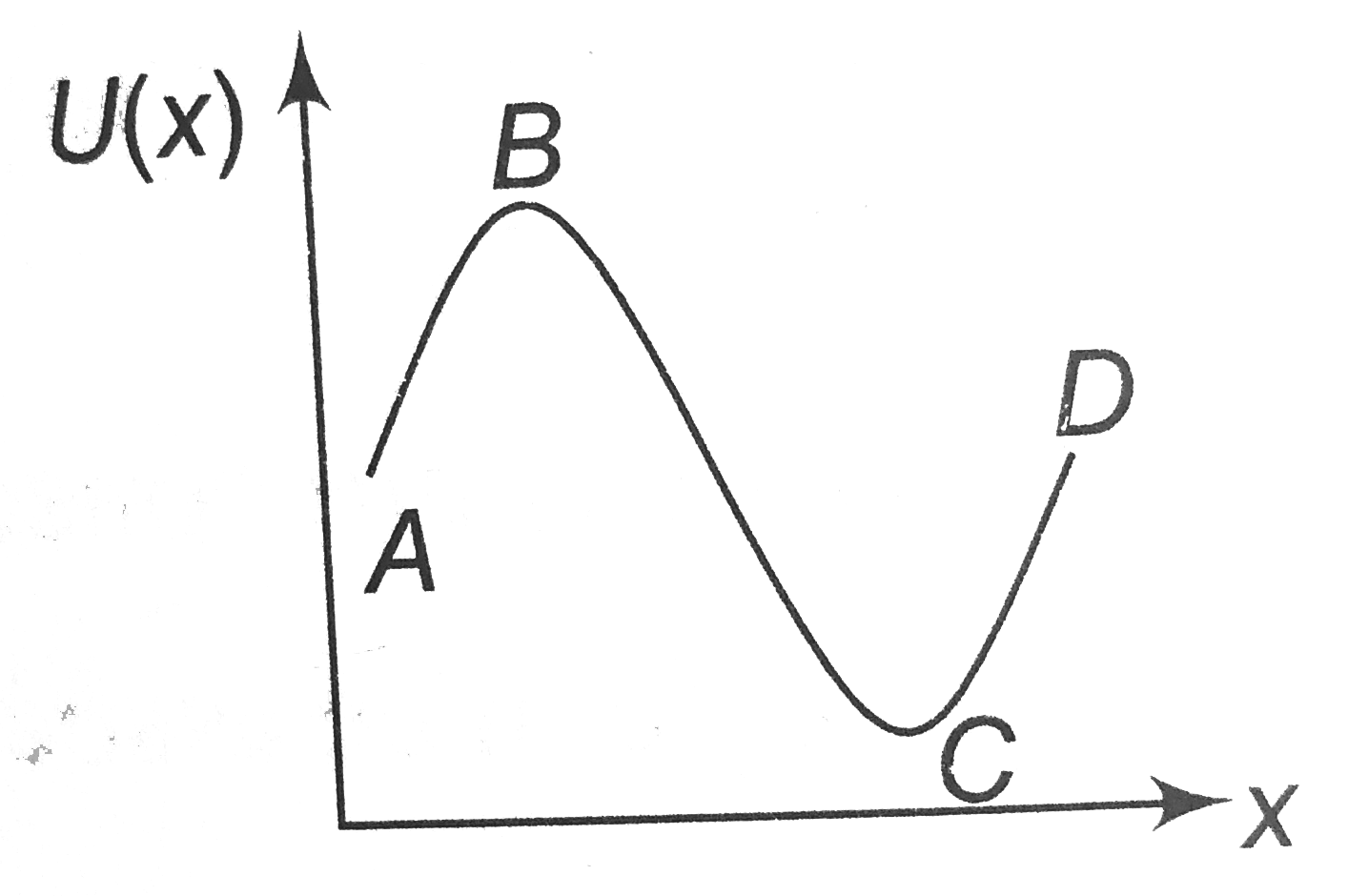
The force acting on the partical is zero at
View SolutionWhich of the following graph is correct between kinetic energy `E`, potential energy `(U)` and height `(h)` from the ground of the partical
View SolutionA ball hits a floor and rebounds after an inelastic collision. In this case
View SolutionThe graph between the resistive force `F` acting on a body and the distance covered by the body is shown in the figure. The mass of the body is `25 kg` and initial velocity is `2 m//s`. When the distance covered by the body is `4m`, its kinetic energy would be
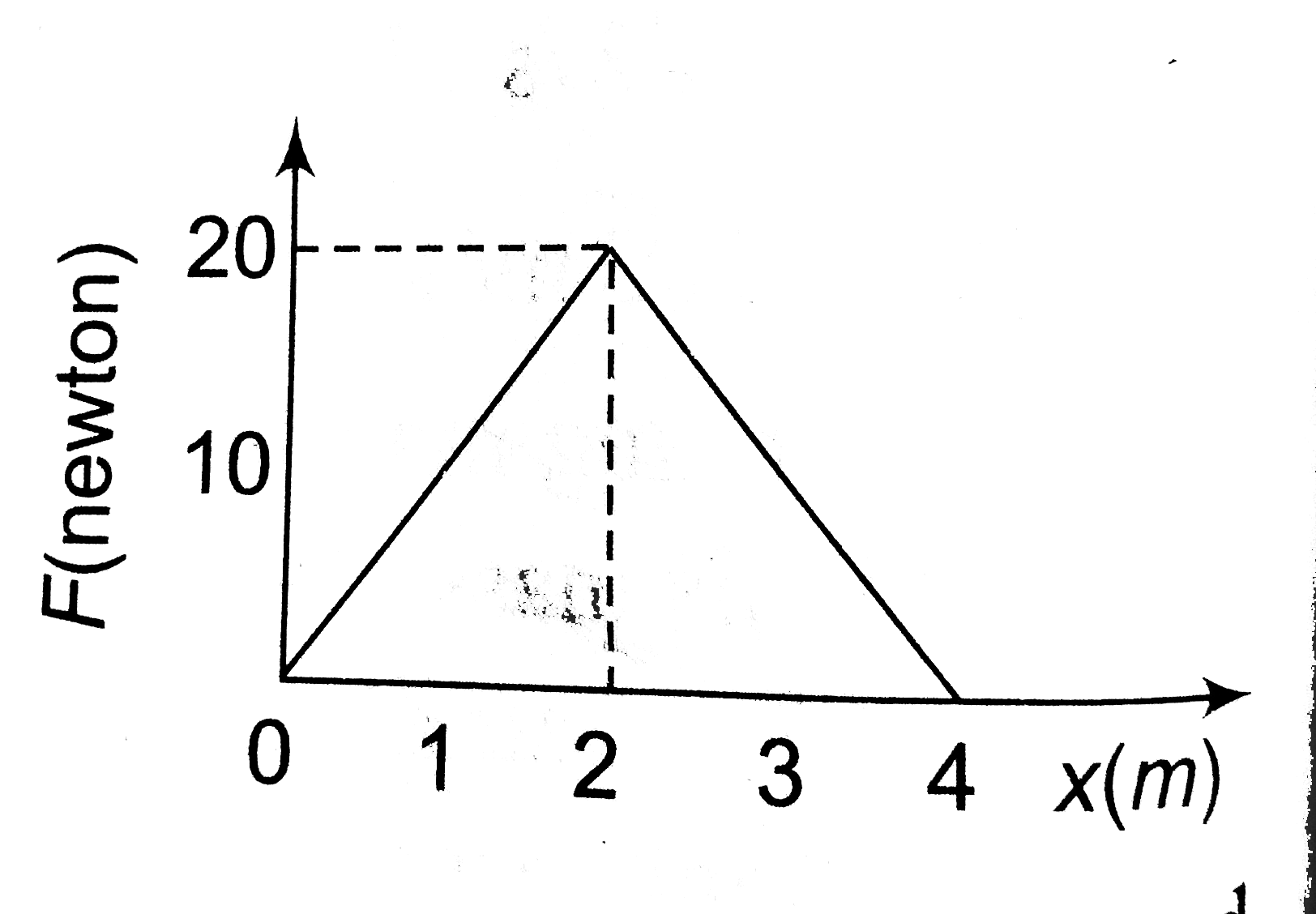
View SolutionIn the figure shown, a spring of spring constant `K` is fixed at on end and the other end is attached to the mass 'm' . The coefficient of friction between block and the inclined plane is `mu`. The block is released when the spring is in tis natural length. Assuming that the `theta gt mu`, the maximum speed of the block during the motion is.
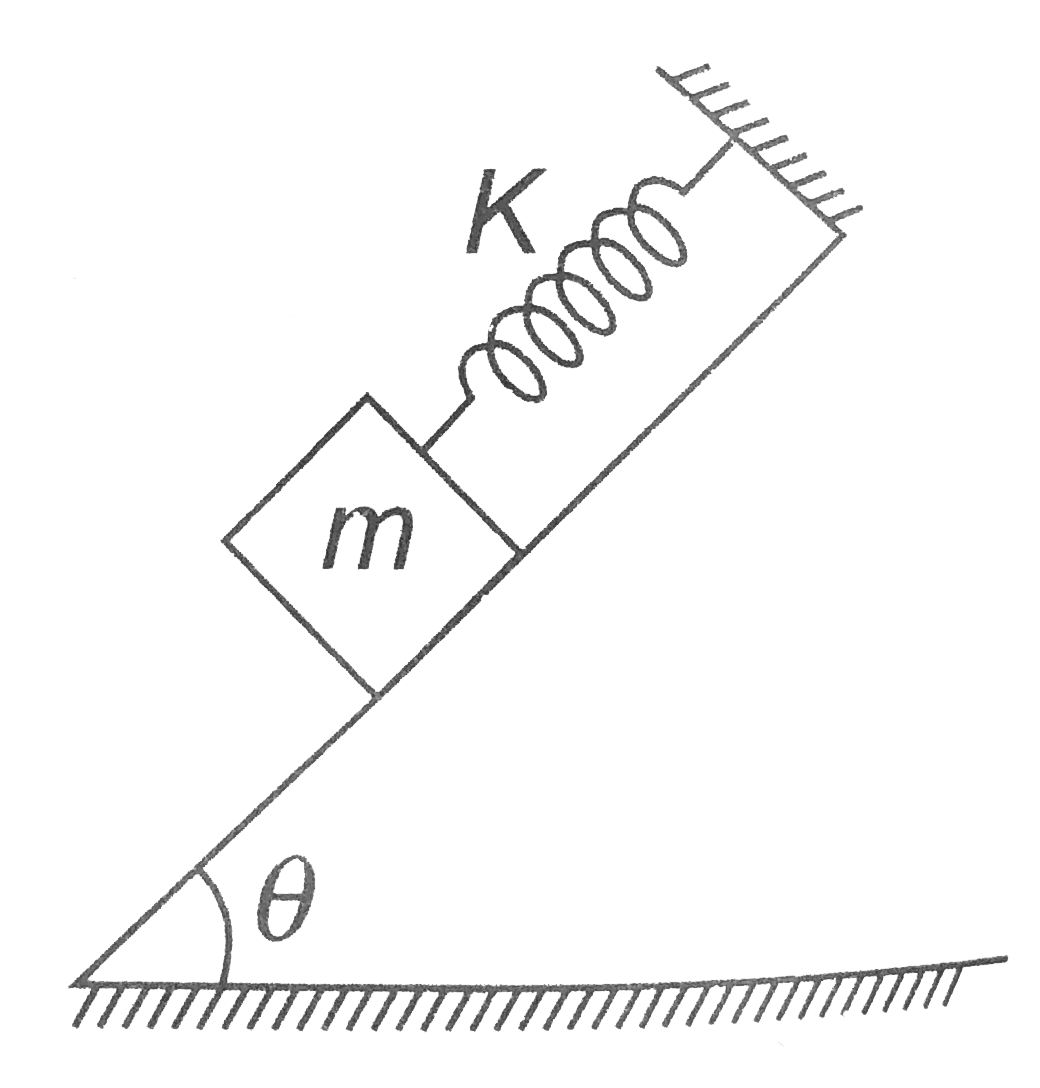
View SolutionTwo identical balls `A` and `B` are released from the position shown in Fig. They collide elastically with each other on the horizontal portion. The ratio of heights attained by `A` and `B` after collision is (neglect friction)
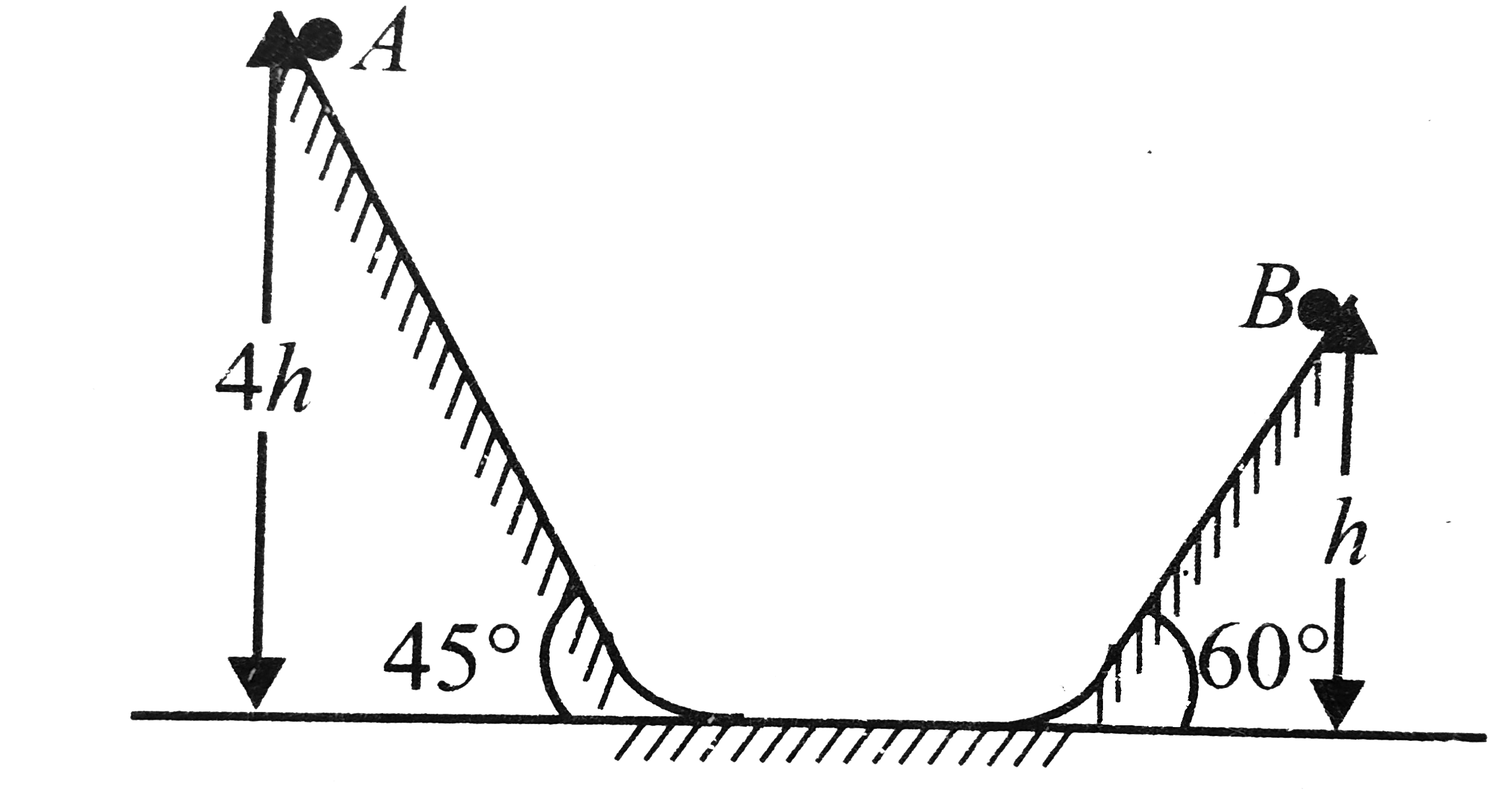
View SolutionTwo equal sphere `A and b` lie on a smooth horizontal circle groove at opposite ends of a diameter. At time `t= 0,A` is projected along the groove and tis first implings on`B` at time `t = T_(1) and again at time `t = T_(2). If `e` is the coefficient of restitution, the ratio `T_(2)//T_(1)` is
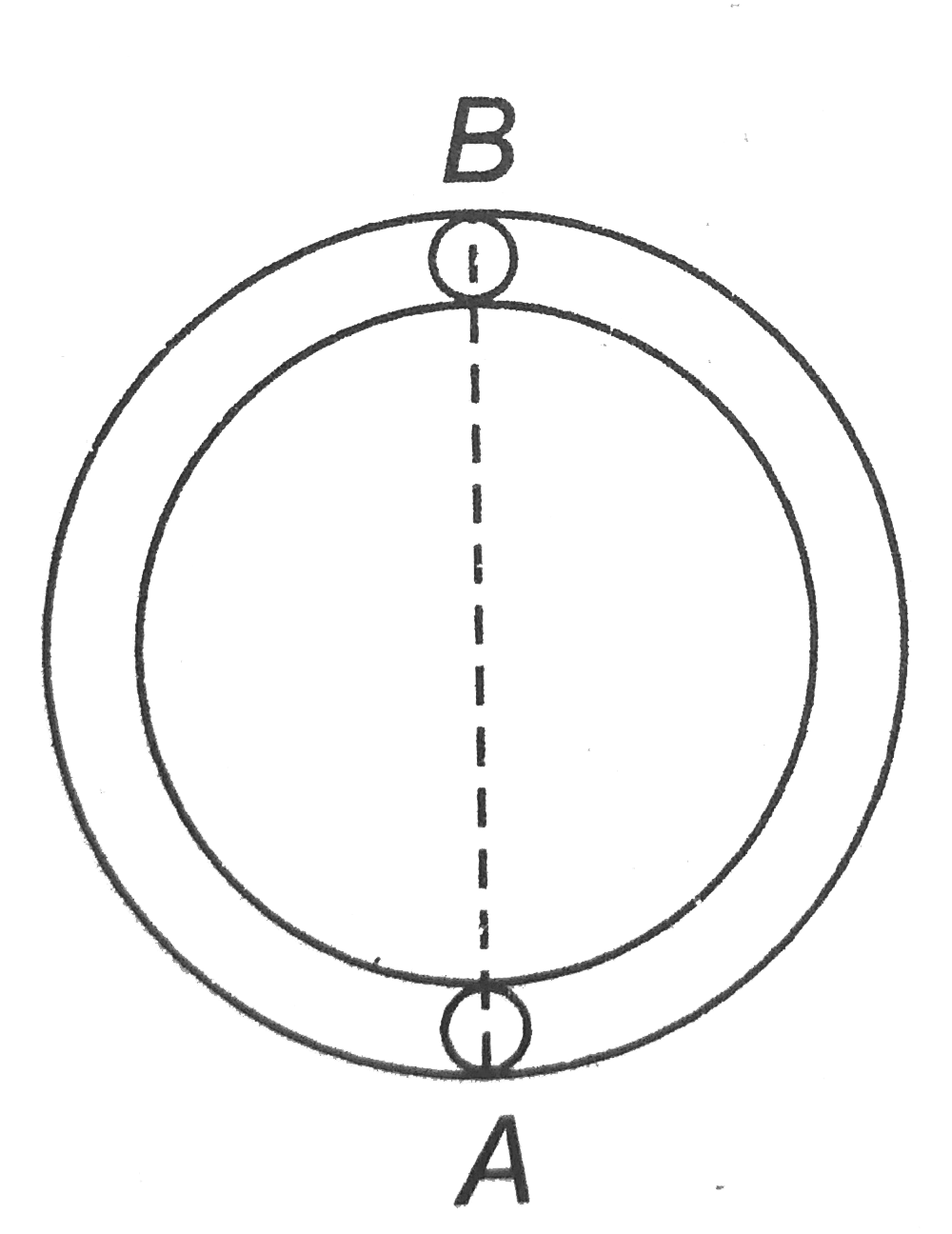
View SolutionTwo bodies of mass `m` and `4m` are attached with string of length `l` is excurting oscillations of angular amplitude `theta_(0)` while the other body is at rest . The minimum coefficient of friction between the mass `4m` and the horizontal surface should be:
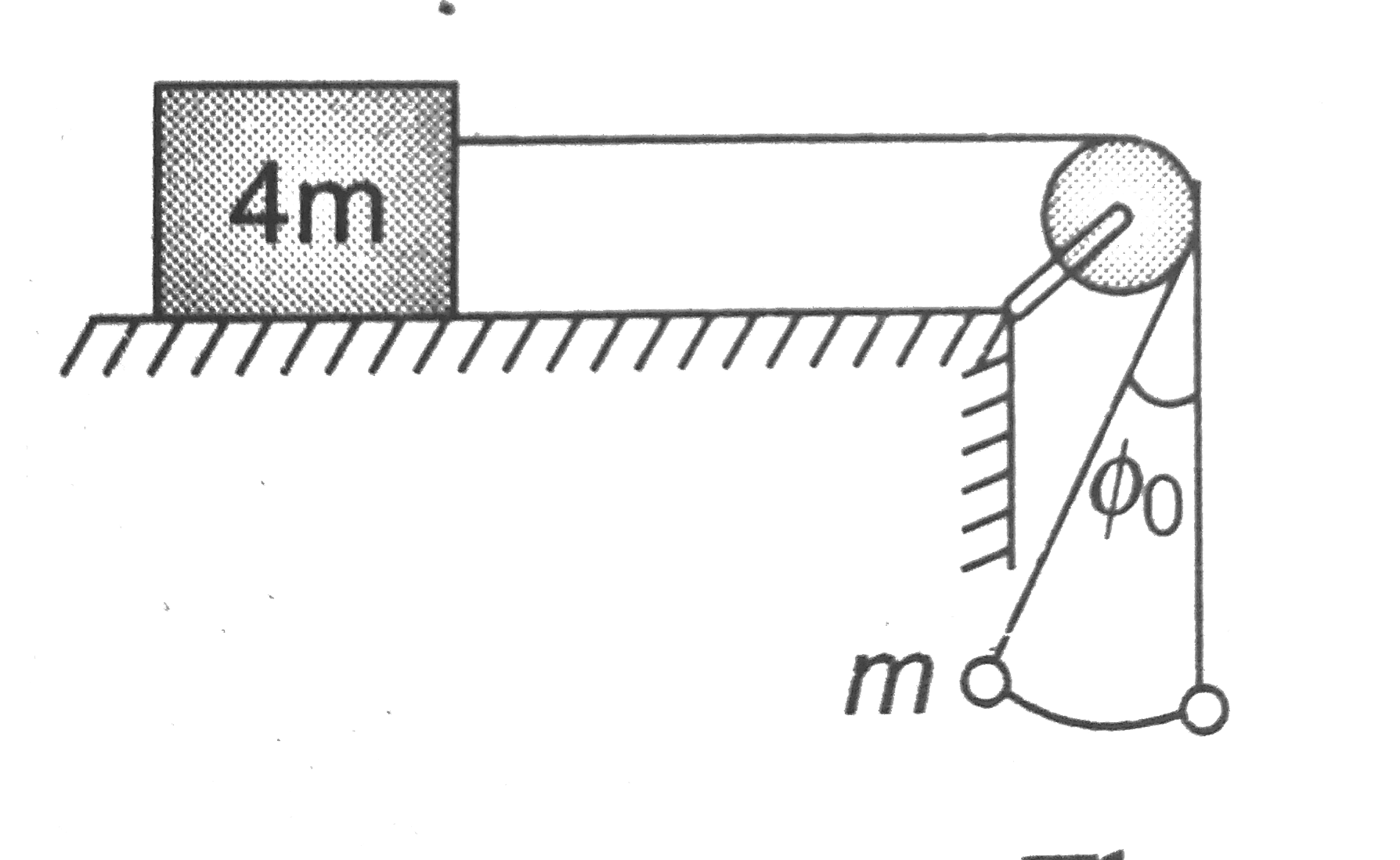
View SolutionA ball of mass `m` moving with velocity `vecu = u_(x) hati + u_(y) hatj` hits a vertical wall of infinite mass as shown in the figure. The ball slips up along the wall for the duration of collision and there is friction between the ball and the wall. Neglect the effect of gravity. Pick up the correct alternative.
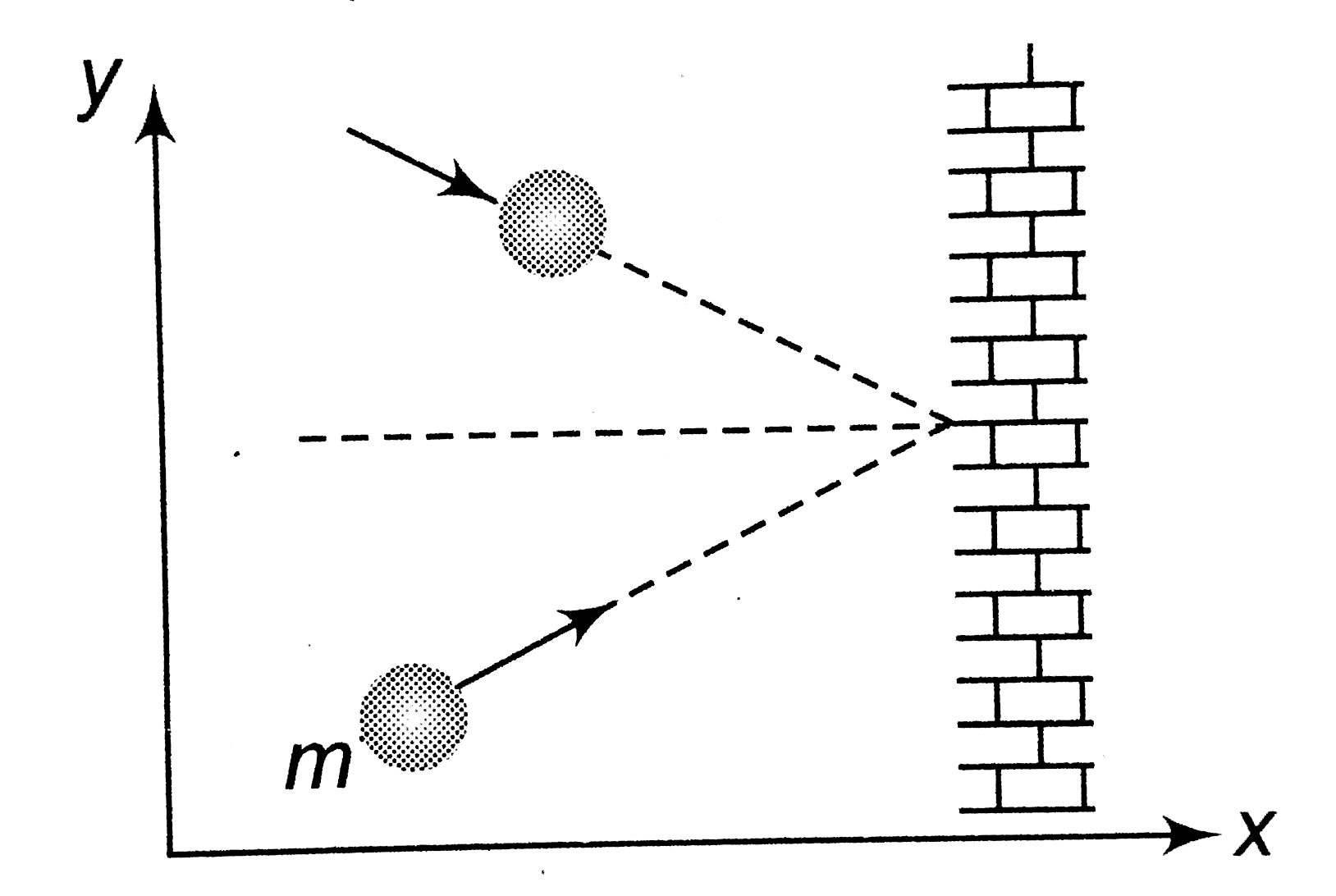
View SolutionA set of a identical cubical blocks lies at rest parallel to each other along a line on a smooth horizontal surface. The separation between the near surface of any two adjacent blocks is `L`. The block at one and is given a speed `v` towards the next one at time `t = 0`. All collisiona are completely inelastic , then the last block starts moving at
View SolutionAssertion : For two bodies, the sum of the mutual forces exerted between them is zero from Newton's third law.
Reason : The sum of work done by the two forces must always cancel.
View SolutionAssertion: According to law of conservation of machainical energy change in potential energy is equal and opposite to the change in kinetic energy
Reason: Mechanical energy is not a conserved quantity.
View SolutionAssertion : The work done by the spring force in a cyclic process is zero.
Reason : Spring force is a conservative force.
View Solution
Chapter Test questions and complete solutions for chapter WORK, ENERGY, POWER AND COLLISION of A2Z PHYSICS (HINGLISH) of Class 11
All Exercises from A2Z Class 11 PHYSICS WORK, ENERGY, POWER AND COLLISION
- AIIMS Questions
- Assertion Reasoning
- Chapter Test
- Circular Motion In Vertical Plane
- Collision
- Concept Of Work Done
- Conservation Of Mechanical Energy And Linear Momentum
- Mechanical Power
- NEET Questions
- Potential Energy, Conservative And Non-Conservative Forces
- Problems Based On Mixed Concepts
- Work-Energy Theorem